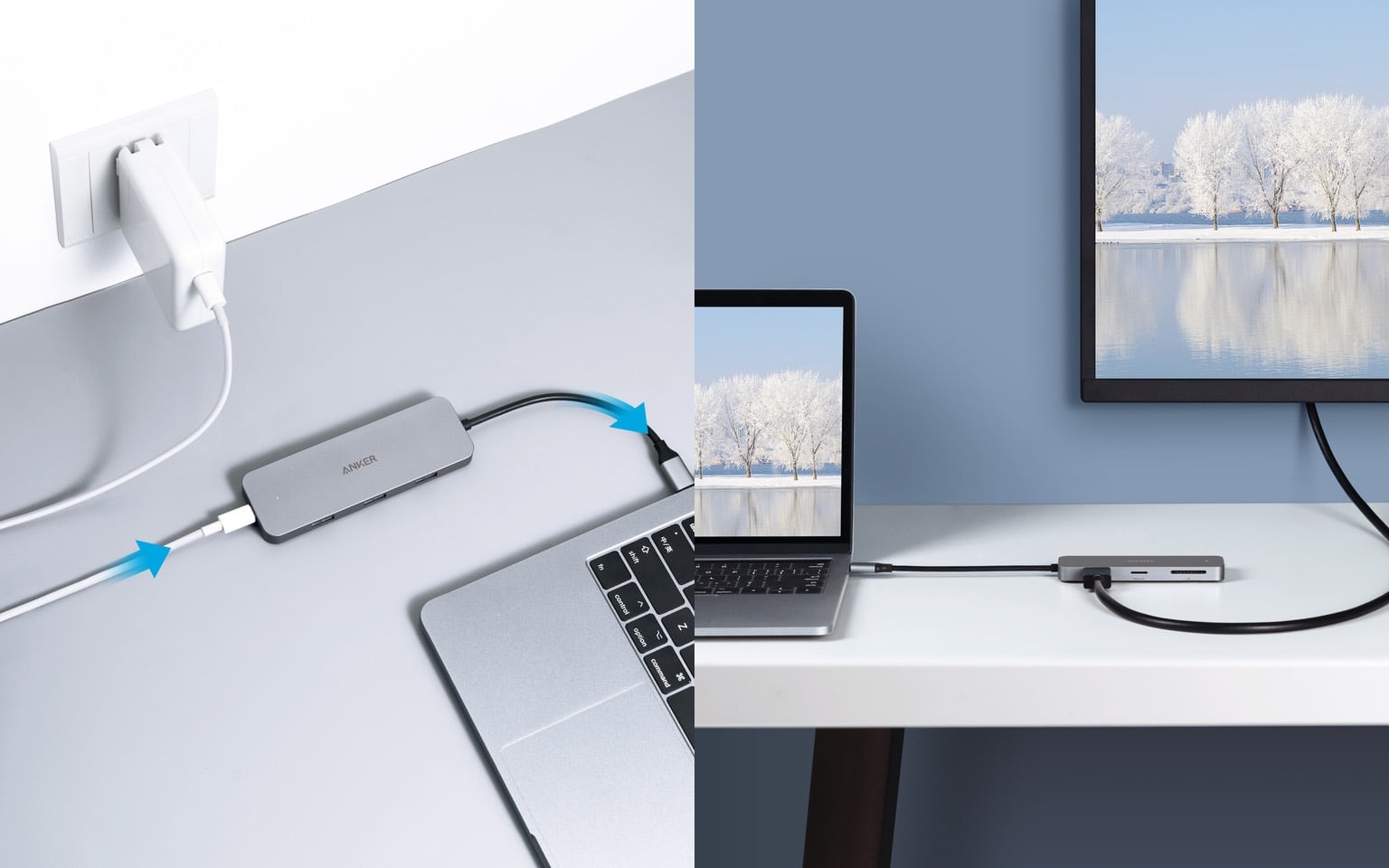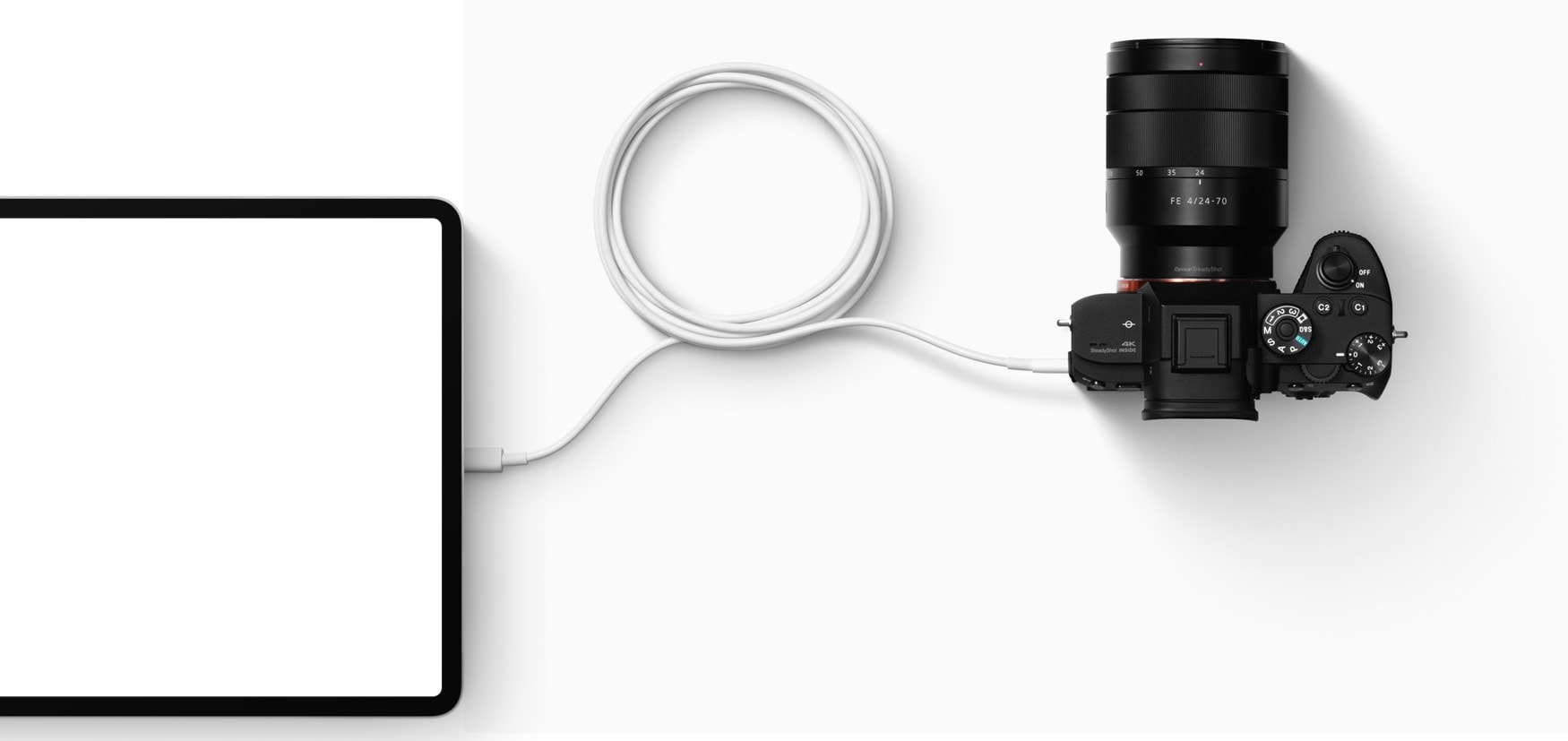Despite its drawbacks, USB-C is the future of the iPad. But just what is USB-C? Well, it’s a connector, but not all USB-C connectors are the same. And in fact, not even everything that looks like a USB-C connector is a USB-C connector.
Confused? I was. Today we’ll find out what USB-C is, why it looks just like Thunderbolt, and what hubs you might want to buy.
This post contains affiliate links. Cult of Mac may earn a commission when you use our links to buy items.
The USB-C connector

Photo: ElecJet
The USB-C connector will probably be more or less familiar to most tech fans. It’s around the size of a Lightning connector, only it has a hole in the middle. It’s also wobbly when plugged in. I hate it, but it brings some advantages, as we’ll see.
Unlike other USB cables — Lightning, microUSB and so on — the USB-C cable is symmetrical. You can plug either end into either device. And the plug itself is also symmetrical, so you never try to shove it in upside-down.
The USB-C connector also looks just like the Thunderbolt 3 connector. That’s because the USB-C spec calls for it to support additional functionality on top of its regular USB duties — Thunderbolt or DisplayPort, for example.
This means that you can plug a Thunderbolt peripheral into a USB-C port, and it won’t work. Or it might work a bit, but you might not get all the functions available if it were hooked up to a Thunderbolt 3 port. Oh, and you probably won’t be able to tell the different between a USB-C and a Thunderbolt 3 cable.
Want that USB-C cable with MagSafe-style connector picture above? Here’s where to find it:
Buy from: Amazon
USB-C power

Photo: Anker
In the case of the iPad Pro, though, USB-C means a few things. USB-C supports a lot more power than a Lightning cable — up to 100 watts. That’s why it can replace a 60-watt-plus MacBook charger.
It also appears that Apple is allowing the new iPad Pros to deliver more power outward, letting them power and charge connected peripherals like iPhones. Previously, the iPad could power connected accessories via Lightning, but more likely than not you’d get a warning that the accessory was drawing too much power.
No longer. In theory anyway. If you hook up a high-draw accessory, the iPad’s battery will possibly drain even faster than before. To fix that, you’ll need a powered hub.
Fancy that Anker 7-in-1 USB-C hub? Get it here:
Buy from: Amazon
What can you connect to iPad Pro via USB-C?
When it comes to connecting peripherals to iPad Pro via USB-C, the list of compatible devices is pretty much the same as it was with Lightning and the Lightning to USB 3.0 adapter. You can connect keyboards, audio interfaces, USB MIDI devices, Ethernet adapters, cameras and external storage (USB sticks and hard drives, but only for accessing photos and videos).
The new USB-C iPad Pro port doesn’t add anything in terms of compatibility with other USB devices — it just changes the way you connect them.
What you can’t connect are old Lightning accessories. Anything that has a cable or plug that slips into the Lightning port is now dead to you, although perhaps you can find a new cable for it.
USB 3.1 gen 2
While the new iPad Pro connector is called USB-C, the stuff going through the wire has its own spec. Just like USB 2.0 and USB 3.0 shared a connector, USB-C specs can differ for the same plug. The iPad Pro uses the latest USB 3.1 gen 2, which can transfer data at up to 10 Gbps. Compare that to the USB 3.0 used in Lightning, with a maximum of 5 Gbps. While this makes little difference for most things (USB 2.0 is more than fast enough for music, for example), it is important for driving external 4K displays, and for hooking up many accessories to the iPad at once.
USB-C hubs
The iPad Pro’s new USB-C port lets you connect USB-C device, obviously, but what does that mean exactly? Some current gadgets support USB-C, but often they ship with a USB-C to USB-A cable for connecting to PCs and older Macs. You can also only connect one accessory at a time, because the iPad Pro only has one USB-C port.
What you need is a USB-C hub. These are readily available thanks to the lack of ports on the MacBook. A hub will let you connect any number of accessories to your iPad. And thanks to that fast USB 3.1 gen 2 connection, there will be plenty of bandwidth for all.
Check out our guide to USB-C docks and dongles here. Or take a look at our other, even bigger guide to the best USB-C accessories for Macs and iOS devices.
USB-C hub essentials for iPad Pro
The important feature when it comes to USB-C hubs is pass-through power. Any old USB-C hub will let you connect accessories. But in order to power the iPad Pro at the same time, the hub should allow pass-through power. This lets you connect a charger to the hub. The hub will then pass that power on to the iPad, as well as (possibly) powering all those accessories.
Until we get an iPad Pro in our hands, we can’t test how this works, or if all MacBook-compatible pass-through hubs will also work with the iPad. Theoretically this should be the case, but with Apple and iPad, you never know until you try.
The beauty of a USB-C hub is that you can have a permanent workstation on your desk and dock the iPad to it. A hub could be connected to power, an audio interface and speakers, musical instruments, an external display, a USB keyboard and also provide an SD card reader. That’s pretty handy.
Note: We originally published this article on Oct. 31, 2018. It has been updated.


